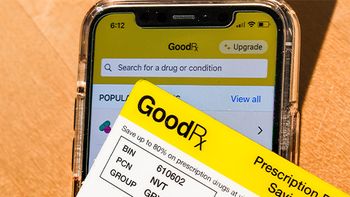
Navigating the patient journey after rare disease diagnosis
Commercial teams can prepare for overcoming predictable hurdles
While rare diseases can be challenging to treat and cure, they are even more difficult to diagnose. By definition, a rare disease affects less than 200,000 people in the U.S. – so few that even physicians with decades of experience may not come across a single case for many of these conditions. In 2017, the FDA approved a new initiative, the Orphan Drug Modernization Plan, to eliminate the mounting backlog of orphan drug approvals, ensure timely responses to new requests for designation and provide manufacturers financial incentives to develop these drugs.
Since the majority of rare diseases are considered serious and life-threatening, this flurry of R&D couldn’t come soon enough. Now more than ever, orphan drugs are a hotbed of activity and innovation. The Center for Drug Evaluation and Research reported more than twice the number of orphan drug approvals in the past eight years compared to the previous eight years. This innovation represents hope for many of the nearly 30 million patients who live with a rare disease and continually search for a cure or for ways to enhance their quality of life.
Patients with a rare disease seldom follow a traditional path from diagnosis to treatment. Their journey is fraught with peril, cluttered with ambiguous symptoms, misdiagnoses and failed treatments – all of which can take an enormous emotional toll on patients and their caregivers. Misdiagnosed patients may undergo a series of ineffective treatments before an accurate diagnosis and viable treatment plan prevails. To help these patients receive successful treatment more quickly, commercial teams must find physicians whose patients would benefit most from these life-changing therapies.
Plan ahead
New, innovative treatments offer hope for a patient’s diagnosis and come with much anticipation. Patients gain access to these life-saving therapies through effective drug commercialization. In fact, an orphan drug manufacturer may have a reservoir of patients waiting for its highly anticipated drug to enter the market.
A reliable forecast helps commercial teams appropriately allocate resources among various sales and marketing initiatives and guides manufacturers toward better decisions. To create a forecast, a commercial team should first make assumptions based on research and a detailed analysis of physicians, potential patients and the marketplace, including expected market share and the estimated impact of a competitive entrant. With a detailed, lever-based forecast model, a commercial team can run what-if scenarios quickly to clearly understand each assumption’s impact on the overall forecast, effectively market their products to the right physicians, and in turn, reach appropriate patients. If manufacturers fail to conduct appropriate analysis for their forecast, they risk falling short of their commercial goals.
When creating a forecast model for an orphan drug, commercial teams must be sure to account for delays in therapy starts, as well as patient compliance and retention.
• Delays in therapy starts: A reasonable amount of time for a patient to retrieve a regular prescription from the pharmacy is typically a few days. That’s not always the case for orphan drugs, many of which are dispensed by specialty pharmacies. These pharmacies sometimes struggle to coordinate approvals with specialists and payers. In fact, some payer authorization can take up to four weeks or more after a physician referral. For these reasons, a company launching its first product may not see any cash flow until two months after launch. If the commercial team fails to account for these delays, the forecast will be incorrect and can cause unfounded concern that the therapy will not meet its commercial goals. Some manufacturers have adopted patient assistance programs as a bridge to help patients get on therapy prior to payer approval.
• Patient compliance: Some conditions require daily medication to lessen side effects or prevent reoccurrence. But patients don’t always comply with treatment guidelines. Patients being treated for chronic conditions typically don’t comply as well with an oral medication as they would an infusion therapy. Further, they may also be less likely to regularly take maintenance medications when an effective, fast-acting rescue medication exists. For example, instead of taking medication to prevent an asthma attack or seizure, these patients may favor therapies that treat the condition after an event occurs. Of course, this mindset impacts how frequently patients refill the maintenance medication and the manufacturer’s overall revenue. On the other hand, commercial teams can monitor for certain circumstances – such as the severity of a disease, the involvement of a caregiver or a patient’s transition from another therapy – that could contribute to regular dosing.
• Patient retention: A forecast’s assumptions include an estimated length of time patients will stay on the therapy. Although each treatment duration is unique, commercial teams can reference data from clinical trials for a more accurate assessment. While commercial teams typically see high retention during the first three months of therapy, physicians may interrupt or shorten treatment if a patient experiences severe side effects. Similarly, a lack of service, such as a continuously delayed shipment, may cause physicians or patients to forgo that product in favor of another therapy. On the other hand, skilled case managers or digital health apps that provide patient support could increase retention.
Draw a map
Of 7,000 rare diseases, only about 500 have a specific diagnosis code in the International Classification of Diseases. Without a code, it can be difficult for manufacturers to determine the best targets for sales and marketing initiatives. The “best-fit” code for one disease may incorrectly include certain specialists for the sales force to target. For example, one code for a rare disease correctly identified gynecologists as potential targets, but also included irrelevant oncologists and allergists. Further complicating matters, specialty pharmacies that handle most orphan drug prescriptions don’t share data. As a result, it can be challenging for commercial teams to understand their therapy’s true market share and identify relevant patients and physicians.
This is where marketing research can help. Marketing research enables the commercial team to map patient flow and better understand their journey, including when, where and from whom patients seek treatment. Commercial teams begin by surveying all individuals involved in diagnosis and treatment – physicians, nurses, caregivers and patients. They can then use these insights to identify trusted specialists who can serve as experts on industry news, drug profiles and disease awareness.
X marks the spot
To effectively promote life-changing rare disease therapies, commercial teams need to develop a robust forecast and find the patients who would benefit most from treatment, as well as their prescribing physicians. They must analyze multiple sources of data and use marketing research to uncover the patient journey from potential misdiagnoses to an effective treatment plan.
Patients diagnosed with rare diseases are often faced with few or no treatment options. It’s more important than ever for manufacturers to understand the unique commercial strategies needed to reach this limited pool of patients. Commercial teams should be sure to draw on knowledge from data and research, follow the patient journey and develop robust forecast models to introduce these therapies to patients. The faster the commercial team can find relevant physicians and patients, the quicker these patients can move forward in the right direction on their journey.
About the Authors
Esin Izat is a manager at Beghou Consulting and leads the firm’s marketing research practice. Prior to Beghou, she spent 10 years at Takeda Pharmaceuticals. She holds a master’s degree in marketing research from Southern Illinois University-Edwardsville and a bachelor’s degree in statistics from the Middle East Technical University in Turkey. [email protected].
Robert Lien is an associate partner at Beghou Consulting. As an experienced consultant for pharmaceutical and biotech companies with a specific expertise in orphan drug therapies, Robert has expertise in sales and marketing analytics, including mathematical modeling, data analysis, statistical modeling and operations research. He earned a doctorate in industrial engineering and management science from Northwestern University. [email protected].
Newsletter
Stay ahead in the life sciences industry with Pharmaceutical Commerce, the latest news, trends, and strategies in drug distribution, commercialization, and market access.




